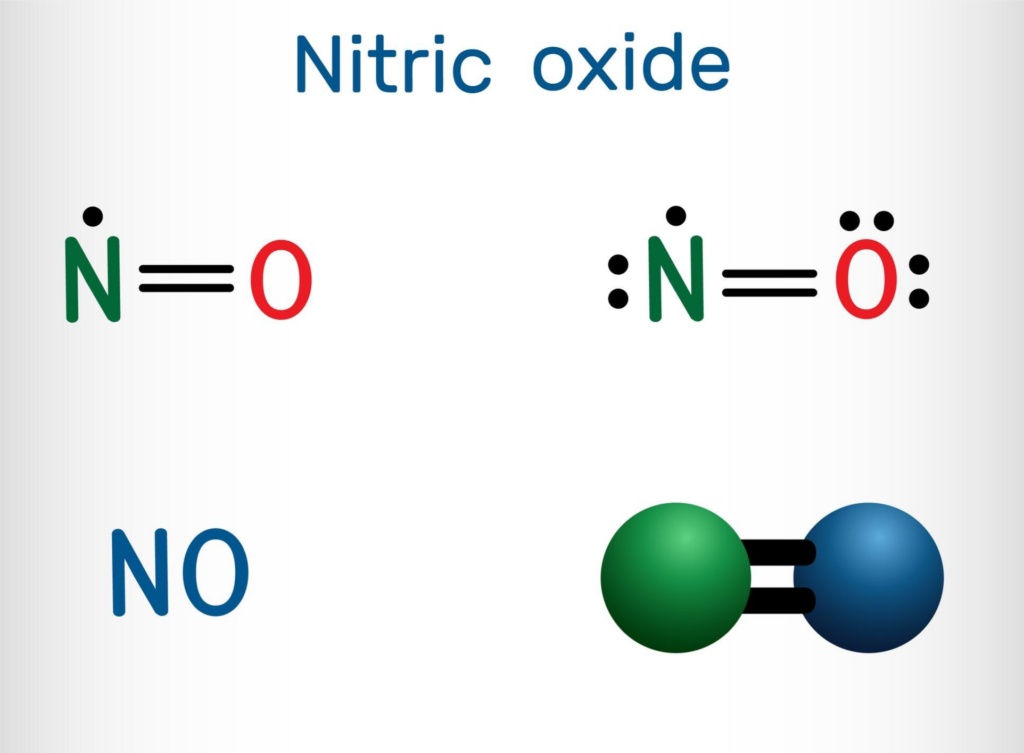Nitric oxide (NO) has become one of the most popular and widely discussed supplements in the world of fitness and wellness. Often marketed for its ability to improve circulation, endurance, and muscle growth, nitric oxide is a naturally occurring molecule in the body with significant health benefits.

Many people are curious about the best time to take nitric oxide supplements to ensure they get the most out of them. In this comprehensive guide, we will delve into what nitric oxide is, its benefits, how to use it effectively, and most importantly, the best time to take it for optimal results.
Whether you’re an athlete looking to boost performance or someone simply seeking to improve overall health, understanding nitric oxide and its proper timing can be a game-changer.
What Is Nitric Oxide?
Nitric oxide is a gas produced by the body that plays a crucial role in many physiological processes. It is a vasodilator, meaning it helps to relax and widen blood vessels, which improves blood flow and circulation.
This is important because increased blood flow can enhance oxygen and nutrient delivery to muscles and tissues, which is especially beneficial during physical activity.
In addition to its role in circulation, nitric oxide also has various other health benefits, including:
-
Improved Exercise Performance: By increasing blood flow, nitric oxide can enhance endurance, reduce fatigue, and speed up recovery.
-
Boosted Muscle Growth: The increased nutrient delivery to muscles can help stimulate muscle growth and improve strength.
-
Cardiovascular Health: Nitric oxide helps to regulate blood pressure by relaxing blood vessels, which can improve heart health.
-
Improved Immune Function: It has been shown to play a role in immune system function and cellular signaling.
While your body naturally produces nitric oxide, many people turn to supplements to boost levels, especially when aiming to improve athletic performance or support general health.
Types of Nitric Oxide Supplements
Before we discuss the best time to take nitric oxide, it’s essential to understand the different types of nitric oxide supplements available. These supplements don’t contain nitric oxide itself but instead contain ingredients that help your body produce more of it.
-
L-Arginine: This is one of the most common precursors to nitric oxide. The amino acid L-arginine is converted by the body into nitric oxide. It is often included in nitric oxide supplements and is known for its ability to improve circulation and exercise performance.
-
L-Citrulline: L-citrulline is another amino acid that is converted into L-arginine in the body. It is often preferred over L-arginine because it has been shown to produce more sustained increases in nitric oxide levels.
-
Beetroot Extract: Beetroot is rich in nitrates, which are converted into nitric oxide in the body. Beetroot extract has gained popularity for its ability to enhance exercise performance and cardiovascular health.
-
Nitrate-Rich Foods: In addition to supplements, certain foods, such as spinach, kale, and beets, are naturally high in nitrates and can help increase nitric oxide levels in the body.
Benefits of Nitric Oxide
Taking nitric oxide supplements can offer a variety of health benefits, particularly for those with an active lifestyle. Some of the most notable advantages include:
Enhanced Exercise Performance
One of the main reasons people take nitric oxide supplements is to improve their exercise performance. The increased blood flow facilitated by nitric oxide leads to better oxygen and nutrient delivery to the muscles during exercise. This can help increase endurance, reduce fatigue, and improve overall workout performance.
Faster Recovery
The improved circulation from higher nitric oxide levels can also aid in faster recovery after exercise. By helping to remove waste products, such as lactic acid, more efficiently, nitric oxide can reduce muscle soreness and speed up the healing process.
Improved Muscle Growth
Nitric oxide’s ability to enhance nutrient delivery to muscles can play a role in promoting muscle growth. This is why many bodybuilders and athletes use nitric oxide supplements to maximize their gains.
Better Blood Pressure Regulation
By dilating blood vessels, nitric oxide helps to regulate blood pressure. This is beneficial for heart health and can reduce the risk of cardiovascular issues.
Enhanced Mental Clarity
Some studies suggest that nitric oxide may also have cognitive benefits, improving blood flow to the brain and potentially enhancing mental clarity and focus.
Best Time to Take Nitric Oxide: Timing Matters
Now that we understand the benefits of nitric oxide, the next question is: When is the best time to take nitric oxide supplements?
The answer depends on your individual goals, the type of nitric oxide supplement you’re using, and your daily routine. Let’s explore the best times to take nitric oxide based on different fitness goals and circumstances.
For Workout Performance
If your primary goal is to enhance exercise performance, the best time to take nitric oxide supplements is about 30 to 60 minutes before your workout. This timing ensures that nitric oxide levels peak during your workout, helping to increase blood flow, endurance, and muscle pump.
-
Pre-Workout: Taking nitric oxide before exercise maximizes the vasodilation effect during your workout, allowing for better oxygen and nutrient delivery to your muscles. This can enhance performance and reduce the likelihood of fatigue.
-
Fast-Acting Nitric Oxide: If you are using a nitric oxide supplement like L-arginine, which tends to have a fast onset of action, taking it about 30 minutes before exercise will be most effective.
For Muscle Growth
If your goal is to support muscle growth, it’s important to take nitric oxide at times that will maximize nutrient delivery to your muscles. The best time to take nitric oxide for muscle growth is generally before and after workouts.
-
Pre-Workout: Just like for performance, taking nitric oxide 30-60 minutes before your workout will ensure that your muscles receive optimal blood flow during your training session.
-
Post-Workout: Post-workout is another great time to take nitric oxide supplements. After exercising, your muscles are more receptive to nutrients, and increased blood flow can help deliver protein and other nutrients needed for recovery and muscle growth. Taking a nitric oxide supplement post-workout can improve nutrient uptake and promote muscle repair.
For Cardiovascular Health
If you’re taking nitric oxide supplements primarily for cardiovascular health, the timing is a bit more flexible. Nitric oxide can help regulate blood pressure and improve circulation throughout the day. Therefore, taking your supplement in the morning or in divided doses throughout the day is recommended.
-
Morning Dose: A morning dose of nitric oxide can help promote cardiovascular health throughout the day by supporting healthy circulation and blood pressure regulation.
-
Divided Doses: If you prefer to spread out your intake, you can take nitric oxide supplements in divided doses, such as in the morning and evening. This ensures consistent nitric oxide production throughout the day.
For Improved Sleep
Some people also take nitric oxide for its potential to improve sleep. Nitric oxide helps relax blood vessels, which can have a calming effect on the body. If you are using nitric oxide to aid sleep, taking it in the evening or before bed is optimal.
-
Before Bed: Nitric oxide’s vasodilation effects can help reduce stress and promote relaxation, making it a good option for individuals looking to improve sleep quality. Taking it 30-60 minutes before bedtime can help ease your transition into sleep.
For Overall Health and Wellness
If you are taking nitric oxide as part of a daily wellness regimen and not necessarily for a specific fitness goal, taking it at any time of the day can be beneficial. For general health benefits, taking it in the morning can help kickstart the day with better circulation and overall health.
-
Consistency is Key: For optimal results, taking nitric oxide consistently is more important than the exact timing. A daily dose in the morning can be effective for maintaining consistent nitric oxide levels and supporting overall wellness.

Nitric Oxide Dosage: How Much Should You Take?
The optimal dosage of nitric oxide supplements varies depending on the type of supplement and your specific goals. In general:
-
L-Arginine: Typical doses range from 3 to 6 grams per day. Some individuals may take higher doses, but it’s best to consult a healthcare professional before exceeding this range.
-
L-Citrulline: A typical dose is around 6 to 8 grams per day. Citrulline is often preferred over arginine due to its longer-lasting effects.
-
Beetroot Extract: Dosages typically range from 500 to 1,000 mg per day.
It’s important to follow the manufacturer’s recommendations and consult with a healthcare provider to determine the appropriate dosage for your specific needs.
Final Thoughts: The Best Time to Take Nitric Oxide
To summarize, the best time to take nitric oxide supplements largely depends on your goals:
-
For workout performance and muscle growth: Take nitric oxide 30-60 minutes before exercise and consider a post-workout dose for recovery.
-
For cardiovascular health: A morning dose or divided doses throughout the day can support overall circulation and blood pressure.
-
For improved sleep and relaxation: Take nitric oxide in the evening, about 30-60 minutes before bed.
-
For overall wellness: Consistency is key, so taking a daily dose in the morning is a good choice for long-term benefits.
By aligning the timing of your nitric oxide supplements with your specific health and fitness goals, you can maximize their effectiveness and enjoy the wide range of benefits they offer.
References
Best Time to Take Nitric Oxide and Performance Benefits: https://www.ncbi.nlm.nih.gov/pmc/articles/PMC6428434/
Nitric Oxide and Exercise Performance: https://pubmed.ncbi.nlm.nih.gov/27297518/
The Role of Nitric Oxide in Cardiovascular Health: https://www.ncbi.nlm.nih.gov/pmc/articles/PMC3837104/
Impact of Nitric Oxide Supplements on Muscle Growth and Recovery: https://www.ncbi.nlm.nih.gov/pmc/articles/PMC6152670/